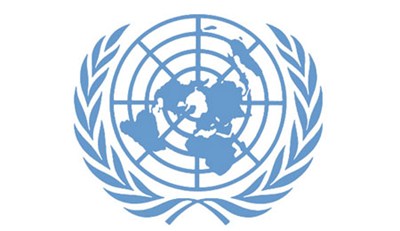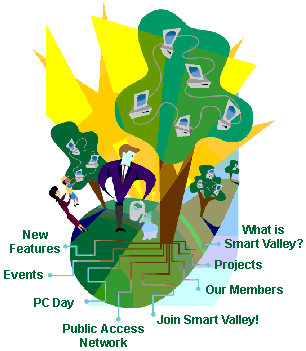 I have talked with women who help manage or even just use community tech centers all over the world – in Egypt, Afghanistan, Jordan and various countries in Africa – and very often, they have told me something that they never put into a program report for UNDP or whomever was funding the center: that the men and boys coming to the center used the computers to view porn more than any other subject.
I have talked with women who help manage or even just use community tech centers all over the world – in Egypt, Afghanistan, Jordan and various countries in Africa – and very often, they have told me something that they never put into a program report for UNDP or whomever was funding the center: that the men and boys coming to the center used the computers to view porn more than any other subject.
This story from the BBC has brought this memory back to me. Here’s an excerpt:
…even as it becomes easier to access pornography thanks to cheap data and smartphones, there is concern that this isn’t being accompanied by any meaningful understanding of sex and relationships. Local boys in the village freely admitted to the BBC that they watched videos of molestation and rape. One 16-year-old said he had seen more than 25 such videos, adding that his friends often shared them on their smartphones.
Sunita Krishnan, the founder of Prajwala, an organisation in the southern city of Hyderabad that deals with issues of sexual violence and trafficking says these violent videos reinforce the old belief that a woman’s choice is insignificant and she has no agency.
This earlier story from BBC about the kidnapping, rape and murder of a child talks about some of the reasons for the attitude in the country about women.
India is not alone when it comes to high rates of incidence of rape. But many believe patriarchy and a skewed sex ratio may be making matters worse. There is public apathy as well: the rights and security of women never become election issues.
This story for INews by Divya Arya gives more background:
India has seen an internet revolution of a different kind in the past few years. Low-cost smartphones, cheap data and popular social media apps have enabled vast rural parts of the country to stream videos like never before. Pornhub, widely reported to be the world’s largest porn website, claims that India is now the third largest consumer of its content in the world after the United States and United Kingdom. The majority of its content in India is accessed using mobiles.
For many young Indian men, their introduction to sex is the first time they watch porn. India does have an Adolescent Education Program but implementation remains a challenge and girls and boys rarely mix with each other in smaller cities and villages. As I started travelling and talking to young men about this for a new BBC World Service documentary airing as part of the 100 Women season, the impact of watching porn in the absence of real interaction with women became clear. It was not only leading to objectification of women in their mind, but also re-enforcing the entitlement men have traditionally felt on women’s life decisions. In marriage, motherhood and desire to work, women remain secondary citizens…
Multiple men confirmed to me that videos of molestation, and professionally shot violent pornographic content, both were the most searched content online in cities as well as more rural areas. As more violent content became available, watching simple sex stopped being the preference for many. These men confided about wanting to replicate what they saw online and some of them explained that it did affect their personal relationships adversely.
Clicked on a link within the original story about a related story and it opened with a situation that sounded all too familiar to me:
On his many trips to Internet cafes in the bustling central Indian city of Indore, lawyer Kamlesh Vaswani discovered what he calls the “epidemic” of pornography.
“I would go to download important Supreme Court judgments, and pornographic adverts would pop up instead. And when I looked around, I saw rows of children surfing porn openly without a care in the world,”
There are calls for bans on porn but there are fears this will lead to banning sites regarding sexual health, even breast cancer.
Here’s an hour-long documentary from BBC’s 100 Women series about the proliferation of online porn in India via smartphones.
I’m glad to see the discussions about what to do about the massive increase in the use of smartphones and social media leading to widespread myth-spreading and all of the consequences of that – but what about this very real issues of these online tools being used to promote and encourage violence against women?
Also see:





 So much of what the press and bloggers herald now as pioneering or disruptive on the Internet isn’t at all. In 1995, I was talking online with friends, old and new, in all the ways I do now, with the exception of live video: we were writing messages in real-time and messages posted somewhere to read later. We were making and sharing audios and videos. We were creating communities. We were using online tools to train, to learn, to change minds, to promote ideas and to research. The names of the tools have changed, and they have all definitely gotten more sophisticated, but rarely do I read an article about something new online and find that, in fact, it really is something new, innovative, or disruptive.
Many tech pioneers and early tech history have been forgotten, and web sites that detailed these efforts are gone, sometimes not even available on the
So much of what the press and bloggers herald now as pioneering or disruptive on the Internet isn’t at all. In 1995, I was talking online with friends, old and new, in all the ways I do now, with the exception of live video: we were writing messages in real-time and messages posted somewhere to read later. We were making and sharing audios and videos. We were creating communities. We were using online tools to train, to learn, to change minds, to promote ideas and to research. The names of the tools have changed, and they have all definitely gotten more sophisticated, but rarely do I read an article about something new online and find that, in fact, it really is something new, innovative, or disruptive.
Many tech pioneers and early tech history have been forgotten, and web sites that detailed these efforts are gone, sometimes not even available on the  I have talked with women who help manage or even just use community tech centers all over the world – in Egypt, Afghanistan, Jordan and various countries in Africa – and very often, they have told me something that they never put into a program report for UNDP or whomever was funding the center: that the men and boys coming to the center used the computers to view porn more than any other subject.
I have talked with women who help manage or even just use community tech centers all over the world – in Egypt, Afghanistan, Jordan and various countries in Africa – and very often, they have told me something that they never put into a program report for UNDP or whomever was funding the center: that the men and boys coming to the center used the computers to view porn more than any other subject.
